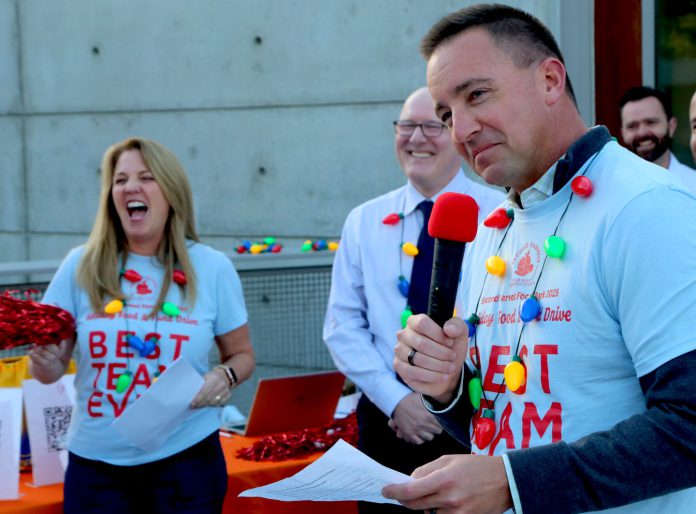
A federal judge on Thursday ruled that the Trump administration must fund Supplemental Nutrition Assistance Program (SNAP) benefits through November for the 42 million people who depend on them.
“People have gone without for too long,” said U.S. District Judge John McConnell. “Not making payments to them for even another day is simply unacceptable.”
The ruling was likely a relief for millions of people who were facing the loss of their supplemental food assistance during the holidays. But it is not clear what will happen after November.
With as many as 40,000 people throughout Santa Cruz County facing the loss of their food stamp benefits due to the ongoing federal government shutdown, the Santa Cruz County Board of Supervisors on Tuesday unanimously declared a local emergency.
The move will among other things protect residents from eviction and protect residents from price gouging.
Also included in the declaration is a $500,000 contribution to Second Harvest Food Bank to help the organization feed the estimated 25,000 additional people who will turn to them for assistance every month.
County Executive Officer Nicole Coburn said the move could be unprecedented.
“This may be the first time we’re declaring a local emergency for a food insecurity situation,” she said. “This is creating a really horrible situation for thousands, tens of thousands of low-income households in Santa Cruz County.”
Many people are still not getting benefits, Coburn said, adding that federal lawmakers such as Jimmy Panetta have told counties to prepare for the crisis to last through the end of December.
The county, which will take the money from its Supplies and Services budget, is not alone in providing money for the food bank.
The Santa Cruz County Office of Education, the cities of Watsonville and Santa Cruz, and Community Foundation Santa Cruz County have pledged more than $1 million.
And those funds will help Second Harvest provide the extra needed assistance through the end of the year, since the organization estimates it needs approximately $1 million per month to meet the increased demand.
The food bank Thursday at its annual Holiday Food and Fund kickoff announced this week’s goal of 5.5 million meals.
The loss of the benefits does not just hurt the recipients. It also means that they will not be spending roughly $6.5 million that normally would go to local stores and farms.
“The ripple effect of this essentially will … be felt by many of our retailers who open up their businesses to welcome the foot traffic that comes with CalFresh recipients,” said SHFB CEO Erica Padilla-Chavez, who described the crisis as an “unprecedented moment for any community across the country.”
The Food Bank works with 65 local organizations such as Pajaro Valley Loaves and Fishes and Grey Bears to distribute 13 millions of pounds per year.
Every jurisdiction, she said, is fending for themselves as they grapple with the funding loss.
“There is no playbook for this,” she said.
Those amounts are pending formal approval by their respective governing bodies.
“In Watsonville, we’ve seen firsthand how families are struggling to stretch their budgets,” Watsonville Mayor Maria Orozco said. “Approving this contribution would reflect our shared commitment to supporting the community when it needs us most.”
•••
How to help
Make tax-deductible donations directly to Second Harvest Food Bank at thefoodbank.org or volunteer to help with food distribution. For information on where to find emergency food resources, santacruzcountyca.gov/Sanctuary













So is the County going to pay the tenant’s rent to the landlord when they use their rent money for food? If not, why should landlords be forced to fund relief for this “food emergency” and not the County as a whole with County tax money. The Fifth Amendment to the U. S. Constitution states, “nor shall private property be taken for public use, without just compensation”. This provision prohibits the government from seizing private property for public use unless it provides fair market value to the owner, a concept known as eminent domain. By not allowing evictions, the County is effectively taking the landlord’s property without just compensation. Also, what is a landlord supposed to do if he or she needs the rent to obtain his or her own necessities of life or to pay the mortgage on the property?